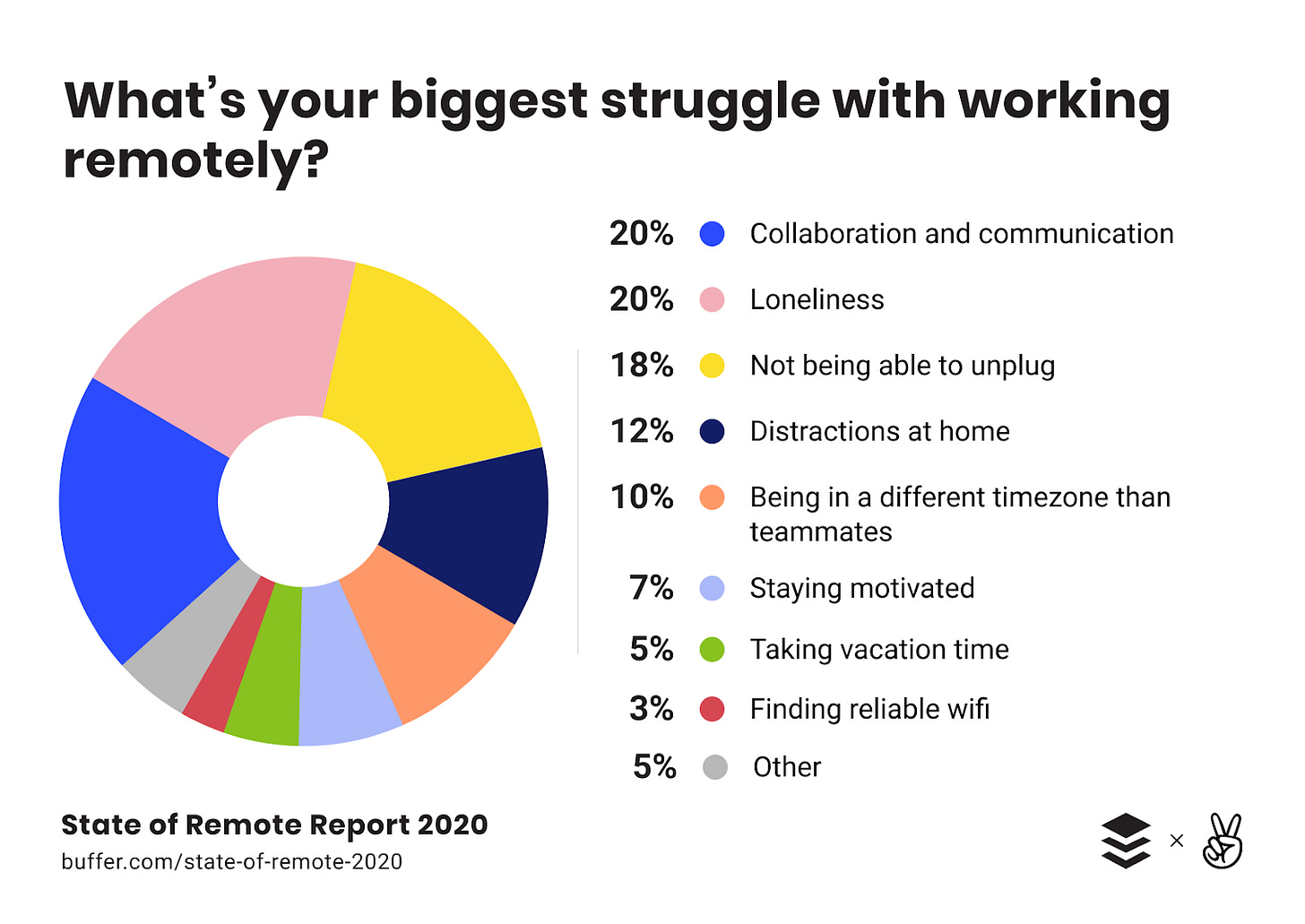Can a 'Distributed Workforce' Become Our Reality?
Sometime last year, I had a very enriching discussion with Professor Henry E Lowood, Curator for History of Science & Technology Collections at Stanford University. We spoke of the evolution of the Silicon Valley into the modern technological innovation hub it is today. He mentioned how the Valley is a concoction of technology, academia and research. It was this mix that attracted Hewlett Packard to start from a garage in the Valley in 1939. The rest, as we know, is history.
Although, for sometime now there have been several murmurs that the ever-so-attractive Valley is facing an exodus (due to high costs of living and real estate etc.), but with the pandemic, these fissures are more clearly visible (read How the Pandemic Could Drive a Silicon Valley Exodus, How an exodus of tech workers could reshape Silicon Valley). With more and more people working remotely and in many cases, traveling back to their hometowns to be with family, a discussion around the possibilities of a distributed workforce is becoming much more relevant - whether in the Valley or closer home in India or any industrial cluster for that matter.
Distributed work broadly refers to work done by employees within the same organisation who are separated by their geographical locations. This may include a hybrid of employees who work in a traditional office environment as well as employees who work from home, coworking spaces, public spaces, or remote offices and mobile employees who work on-the-go. Technological advancements and changes in the global economy are increasing the geographic distribution of work across all industries.
While earlier, remote work was a privilege and very few people worked from quaint remote locations, this trend is seeming much more like a reality in times to come; this time though, more people will work from their own towns and not really have to work out of Metros. Can a ‘Distributed Workforce’ then redefine the concept of the restricted, location-dependent office space and most importantly allow people the luxury of being truly ‘remote’?
When urban hubs lose their lure...

Much before the pandemic struck, Parbhat Puri (26), a software developer based in Pehowa, Kurukshetra in the Haryana State (India), started looking for an internship in 2015 when he was in his 6th semester, B.tech in computer science and engineering at Shri Mata Vaishno Devi University, Katra (Jammu and Kashmir). After several interviews and rejections he landed a role and it turned out to be remote.
Interestingly, it was a role with a company in the US and he was paid a stipend in USD. After college, he continued working with them and enjoyed the thrill of earning in USD and spending in INR. Ever since, Puri has taken up several freelancing assignments and continues to stay remote.
According to Darren Murph, Head of Remote at GitLab*, one can draw meaningful parallels to every major urban center in the world which is experiencing housing crises and public infrastructure strain and the impact of remote work. No city can infinitely expand, and tying one’s long-term economic stability to corporations which occupy skyscrapers has proven to be a volatile decision for many.
Remote work enables the reversal of rural depopulation. It allows people who are living in cities purely due to their vocation to reimagine what life could look like elsewhere, bolstering economic tax bases in underserved areas while simultaneously relieving strain on overpopulated cities.
* GitLab has over 1,280 employees across 65 countries and regions. As an all-remote organization since inception, they have no company owned offices.
Is a ‘Distributed workforce’ truly sustainable?

Says Murph, this is a net positive for all sides. The first order effects are improvements in diversity and inclusion, as well as reduced infrastructure strain on cities and improved economic conditions for small and mid-sized communities.
Second order effects are pronounced. Cities will have to spend less on new highways and services, and can instead focus on improving existing infrastructure and investing in elements which make a city more livable rather than optimizing for the next corporate skyscraper.
Third order effects are world-changing. The innovative mentality which has been geographically locked to Silicon Valley/ or any Hub can now expand globally. Rather than startup incubators being biased towards a certain region, the influencers behind them can implant that knowledge in lesser-known corners of the globe, thereby spreading opportunity and decoupling innovation and geographic bias.
However, Vineet Devaiah, Founder and CEO of Teliportme, a social network for immersive experiences, believes that this is still a white collar phenomenon and a miniscule one at that. Critical functions like sales and business development will continue to have to be close to decision makers, who are still based in the Hubs. Since 2018, Teliportme has been 100% remote and has no physical office spaces.
How can companies make this work?
“Employer expectations are changing today and we have the technology to support a distributed workforce. Organisations have let go their focus on the process and focus on the outcomes instead (except where compliances are concerned),” said Shaakun Khanna, head of HCM Applications, Asia Pacific at Oracle. Khanna believes that the future workforce is definitely distributed and many companies (like Facebook) will have multiple hub and spoke offices, so they are decentralised. Of course, he also warns that traditional industries will take sometime, but the transformation has already begun.
One important, but, often-underestimated aspect companies have to work hard on is inclusive-recruiting and overcoming inherent biases. Unconscious bias is deep-rooted in everyone of us. Hiring Managers generally prefer to hire from a pool of candidates from well-known universities, people who are fluent in English or living in metro cities. In India, regional bias is often the most explicit bias. Hiring Managers explicitly state that they prefer people from their own region saying - "Many of us are from ____. We all speak the same language. This person will fit right in."
Thus prioritising the 'unwritten' culture-fit instead of skill-fit or the organisation's value-fit. There are many similar examples for university and gender bias. In explicit cases it is often justified as a practical choice like - we will have to spend less time and resources on training or communicating with them will be easier.
“Whether the candidates are in-house or distributed, these unconscious biases will continue to exist.” says Chryslynn D’Costa, Co-founder and Head of Research at Serein. Serein uses data and research to share practical inclusion and diversity solutions. She suggests organisations have practices like blind CV sorting, a diverse interview panel and design an inclusive job description (by using tools like Gender Decoder for Job Ads) to overcome inherent biases.
It may-not be that easy or immediate.
While the advantages of ‘Distributed Work’ are aplenty, the recent State of Remote Report 2020 put up some struggles of a remote workforce. The top three being: communication, collaboration and loneliness.

A recent JLL Research also shows that employees are missing social interactions at the workplace. Sandeep Sethi – Managing Director, Corporate Solutions, West Asia – JLL, predicts that offices of the future will include more collaborative areas for team-interactions, ideating sessions and problem-solving discussions. Functions that don’t require team engagements could possibly spend more time working from home or remote flex-offices. He further points out, “activities related to problem-solving, brainstorming and innovation are very hard to deliver, unless people work together in a physical environment.”
We are all used to the concept of the modern office and have placed utmost importance to ‘being-present’ at a workplace. However, now that the workplace can be our own home, are we truly prepared? The advantages and the need for being ‘Distributed’ far outweigh the challenges, but of course, only time will tell if this trend will be adopted at scale the world over.
***
Zoom-out tip for the monthAre you looking for ways to stay focussed longer? Plant a tree.
The Forest App helps you stay focused daily and turn hard work into a land of lush forest.
Use it and thank me later.
https://www.forestapp.cc/




